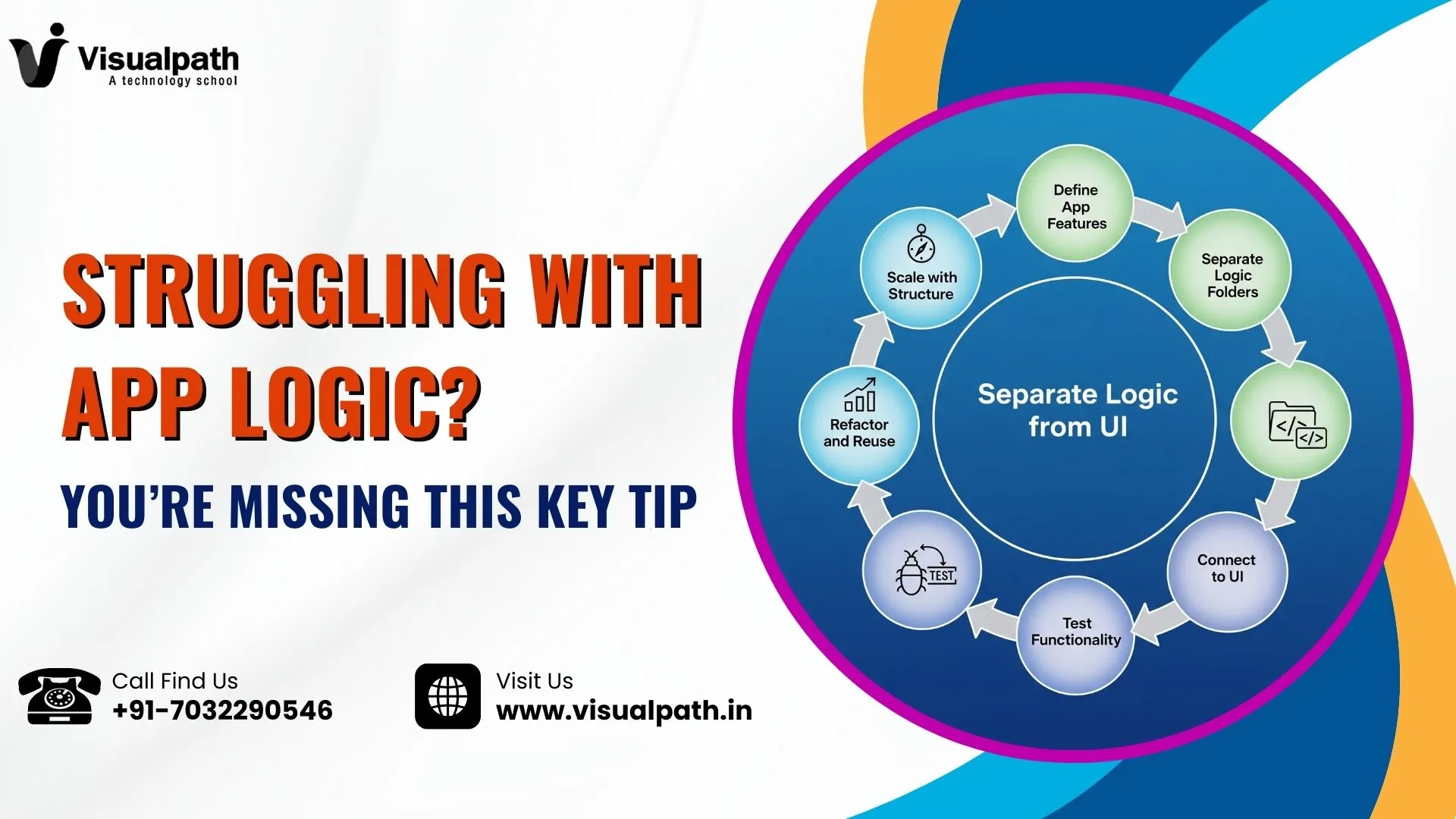When I first started building apps, I ran into a wall that I didn’t even know existed—app logic tip. My front-end looked fine, the backend was connected, but things just didn’t work right. Features would break, conditions would fail, and debugging felt like searching for a needle in a haystack. It wasn’t until I discovered this one key tip that things finally began to click. If you’re stuck on how your app behaves, let me share the lesson that turned everything around for me. PowerApps Training
The Real Problem with App Logic
Before we get to the solution, let’s break down the real issue. App logic is more than just “if this, then that.” It’s the engine that drives user interaction, handles data, and keeps your app flowing. When it breaks, users get frustrated, and you spend hours trying to figure out what went wrong. Power Automate Online Training
I used to write everything into one file, or at best, bundle logic into chunks that “seemed” organized. But it led to spaghetti code, where fixing one thing broke another. My apps were crashing, freezing, or doing completely the opposite of what I intended. And that’s when I stumbled on this key idea…
Here’s the Tip: Separate Your Logic Early
Separate your business logic from your UI logic.
That’s it. That’s the game-changer. It sounds simple, but the moment I started doing this, my apps became easier to debug, easier to scale, and far more stable.
When you clearly separate what the app does (the logic) from what the app shows (the UI), everything starts making more sense. If the user clicks a button, the UI should only inform the logic layer—and the logic should decide what happens next. Think of your logic like the brain, and the UI like the face. Keep them talking, but not tangled. PowerApps Online Training
Start Small, Stay Clean
I began implementing this by creating helper files and logic folders inside my project structure. Even a simple React app felt cleaner when I moved logic to a separate utils folder. Suddenly, my code became readable, testable, and flexible. That alone made the learning curve easier.
If you’re working with frameworks like React Native, this separation becomes even more important because of the complexity of mobile states, asynchronous calls, and navigation. You’ll save hours (and headaches) just by isolating your logic from the start.
Debugging Becomes a Breeze
Ever had a bug that seemed impossible to track down? I’ve been there. Debugging used to be a nightmare—until I started organizing logic separately. I could now test parts of the app without relying on UI clicks. For instance, I could simulate a login process in my logic layer and instantly know if the bug was in the data flow or the UI.
This approach aligns perfectly with clean architecture principles and even opens doors to unit testing individual logic pieces. As a solo developer, I don’t always write full tests, but being able to isolate functions for manual testing is a massive win.
Make Your App Scalable
Once I started building larger apps, I realized how vital this practice was. When you’re managing multiple features—auth, user profiles, settings, notifications—it becomes impossible to juggle everything in one file. By separating logic, I could have a dedicated service for each feature and plug them into the app as needed.
This also made it super easy to reuse components. A logic function written for one feature could be used in another with minimal tweaking. No more rewriting the same code. It saved me time, and my app became more maintainable as it grew.
Don’t Skip Documentation
Another benefit I didn’t expect? Better documentation. When your logic is clearly structured, it’s easier to comment, easier to explain, and easier to return to later. I often forget why I wrote something three weeks ago—but now I can jump into my logic.js file and quickly follow the thought process. Clean code is a life-saver, especially when working on long-term projects or when handing it off to collaborators.
Final Thoughts
If you’re struggling with app logic, don’t blame your tools, your language, or your framework. The real issue might be your structure. Take it from someone who learned it the hard way: separating your logic is the app logic tip that changes everything.
Start with small steps—create a folder for logic functions, move things out of your UI files, and build a habit of thinking modular. Trust me, your future self (and your users) will thank you.
Trending Courses: Microsoft Dynamics 365 Business Central, Dynamics CRM, Generative AI
Visualpath stands out as the leading and best institute for software online training in Hyderabad. We provide PowerApps and Power Automate Training. You will get the best course at an affordable cost.
Call/What’s App – +91-7032290546
Visit: https://visualpath.in/microsoft-powerapps-training.html




